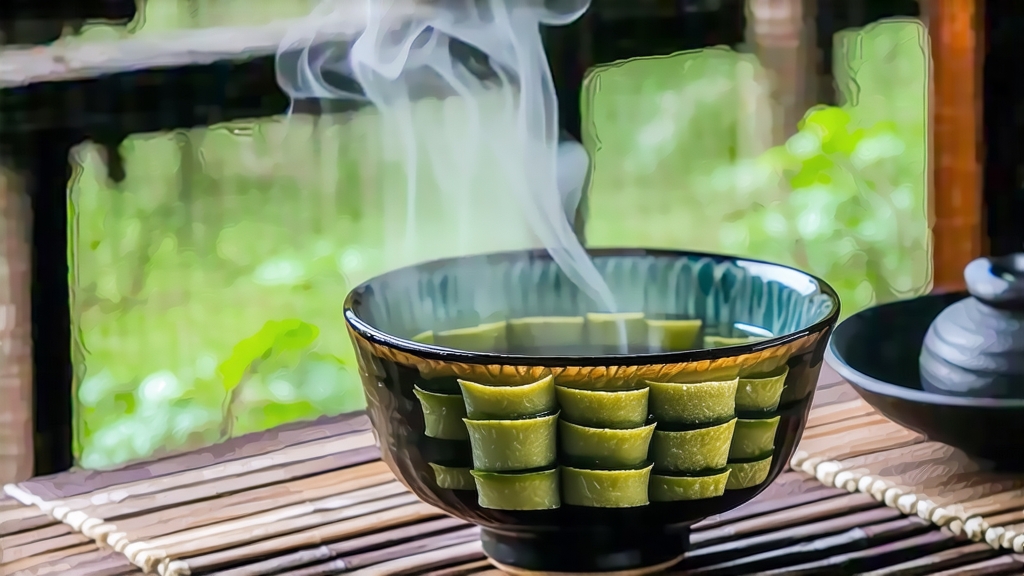
Alishan High-Mountain Oolong is not a single cultivar but a collective name for lightly oxidized, high-altitude teas grown along the forested ridge of Taiwan’s central mountain range. To international drinkers the phrase “Alishan” has become shorthand for a style—floral, creamy, and buoyantly sweet—that captures the island’s cool cloud forests in a cup. Yet behind the romantic name lies a precise geography, a short but dramatic history, and a craft that turns tender leaf into tiny jade-green pearls capable of releasing seven infusions of ever-evolving aroma.
History
Oolong reached Taiwan from Fujian in the mid-nineteenth century, but Alishan itself remained a cedar-logging frontier until the 1970s. When the forestry ban forced Chiayi farmers to seek new income, they noticed that the same altitude which slowed tree growth also slowed tea leaf growth, concentrating flavor. By 1983 a handful of Qingxin (Green Heart) oolong bushes were planted at 1,200 m near Shizhuo village; the winter harvest astonished Taipei cuppers with its gardenia scent and natural milkiness. Word spread, cooperatives formed, and within two decades Alishan shifted from logging trucks to tea shuttles winding past sunrise viewpoints. Today more than 2,300 hectares of tea garden cloak slopes between 1,000 and 1,400 m, all legally entitled to the regional label “Alishan High-Mountain Oolong.”
Terroir
The Alishan massif intercepts moist Pacific air that condenses into a perpetual mist 200 days a year. Daytime temperatures at 1,200 m average only 18 °C, dropping to 12 °C at night; the diurnal swing forces the plant to convert starches into soluble sugars and fragrant terpenes. Ultraviolet intensity is 30 % higher than on the plain, triggering protective catechins and amino acids that translate into cup sweetness and thickness. Soils are young, well-drained latosol derived from weathered shale, slightly acidic (pH 4.5–5.2) and rich in iron and manganese—minerals that deepen the tea’s aftertaste. Because the mountain sits on the Tropic of Cancer, winter is short; two flushes—spring (late March to early May) and winter (mid-October to early December)—are prized, while a lighter summer pick supplies iced-tea cafés.
Cultivars
Although any Camellia sinensis variety could technically be grown here, three clones dominate. Qingxin (TRES #12) remains the benchmark: low yield, high fragrance, and a signature “cool yun” sensation that feels like breathing mint in a pine forest. Jinxuan (TRES #12, “Milk Oolong”) offers a broader, custard-like aroma and tolerates mechanical harvesting, making it the entry-level Alishan found in airport gift shops. The newest star is Sijichun (Four-Season Spring), planted at slightly lower elevations; its relentless productivity gives winter greens a peach-candy note but lacks the lingering finish of Qingxin. Purists insist that only Qingxin grown above 1,100 m and processed within 18 hours of plucking deserves the name Alishan High-Mountain Oolong.
Plucking Standard
Altitude shortens the growing season, so each leaf is precious. Pickers climb before dawn to finish before the sun burns off the mist. The ideal standard is “one bud with three partially opened leaves,” the third leaf still tender enough to snap without fiber. Anything smaller lacks the polyphenols needed for complex oxidation; anything older yields woody notes. A skilled picker can harvest 25 kg of raw leaf per day—enough for barely 5 kg of finished tea—earning piece-rate wages that exceed the island’s minimum hourly wage by 250 %.
Craft: The Ball-Rolling Journey
Alishan oolong is a “light” oolong, meaning oxidation is arrested at 15–25 %, yet the leaf must still endure a 24-hour odyssey of wilting, bruising, and shaping.
- Solar Wilting: Baskets of leaf are set under filtered morning sun for 20 minutes, just long enough to soften cell walls without triggering grassiness.
- Indoor Wilting: The leaf is then laid on bamboo trays in climate-controlled rooms (23 °C, 65 % RH) for 6–8 hours,